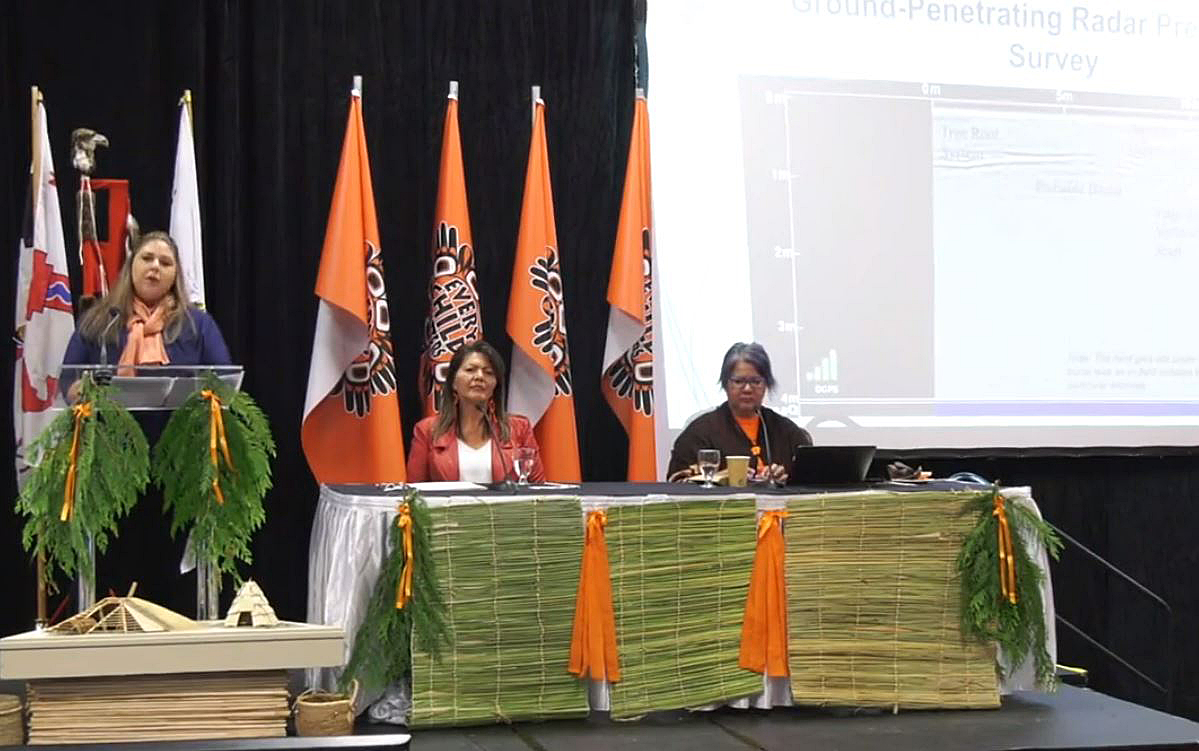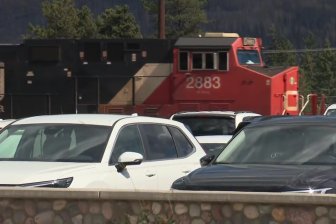Officials released more details regarding efforts to discover the location of burial sites at the former residential school in Kamloops, B.C.

Archaeologist Sarah Beaulieu of the University of Fraser Valley told a news conference on Thursday about the work being performed, after the Tk’emlúps te Secwépemc First Nation revealed on May 27 that the remains of 215 children were found at the site of the former Kamloops Indian Residential School.
About 7,000 square metres of land, or just under two acres, were covered from May 21-24 by ground-penetrating radar, or GPR, around the apple orchard at the Secwépemc Museum and Heritage Park, Beaulieu said.
She said the area was surveyed due to a number of factors, including the oral history of children being woken in the night to dig burial holes in the orchard, plus a juvenile rib bone and tooth separately found there.
“It is important to note that remote sensing, such as GPR, is not necessary to know that children went missing in the Indian residential school context,” said Beaulieu. “This fact has been recognized by Indigenous communities for generations.
“Evidence has existed in government and church archives for more than a century. Canada’s Truth and Reconciliation Commission’s final report identified between 4,000 and 6,000 missing children, but anticipated that these actual numbers would be much greater.”
Beaulieu continued, saying “all residential school landscapes are likely to contain burials of missing children. Remote sensing such as GPR merely provides some spatial specificity to this truth.”
The Tk’emlúps te Secwépemc says it’s calling upon “both the federal and provincial governments to provide immediate and on-going funding and supports to Tk’emlúps te Secwépemc as they develop and implement frameworks and processes to further identify, document, maintain, commemorate, and protect the remains of the children found buried at the Kamloops Indian Residential School, the site itself, and any additional supports required in undertaking this difficult work.”

In GPR terminology, a “subsurface anomaly” refers to any irregularity noted below the surface, while a “target of interest” suggests that the anomaly has an increased index of suspicion for being the object of the search.
Beaulieu said grid surveys have been performed, with community members flagging areas of interest.

Get breaking National news
A number of factors have to be considered for burials, including whether the burials are in caskets, a vault or in a “natural” state, she added.
For example, there will be notable differences in GPR reflections between a casket and a natural burial.
“The date of the burial will reflect whether the casket will be intact or has deteriorated or collapsed,” she said.
“Further, when surveying for natural burials with no casket, one must pay attention to the very subtle soil disturbances reflected in the data.”

The number of burials and missing children at the former Kamloops residential school is currently unknown, she said, “as this was a preliminary investigation.”
Her report includes some of the probable locations.
“There remain over 160 acres that still require surveying before these numbers can be finalized,” she said. “There remain 200 targets of interest in these preliminary results.”
Beaulieu listed the following as additional supporting evidence:
- The depressions in the orchard correlated with the subsurface anomalies observed in the GPR data.
- There was an east-west configuration of the subsurface anomalies in the orchard that support typical Christian burial traditions.
- The juvenile rib bone and tooth were found in the same location.
- The ceremonial and oral histories that recall burials in this location.
“A preliminary investigation such as this is not intended to provide exact numbers or final results,” she said, “but rather to confirm the existence of the burials.”
Only forensic investigation will provide definitive results, she added.
“There are very likely to be many human burials in this study area.”





Comments